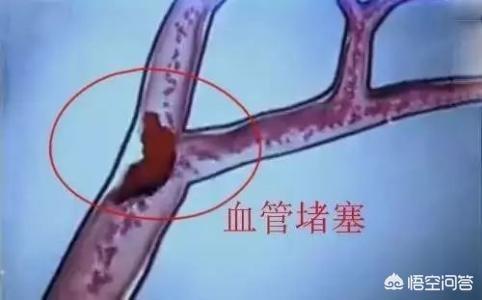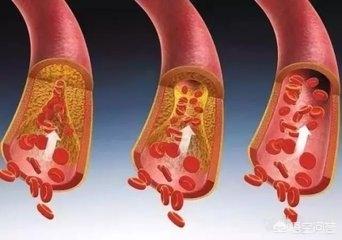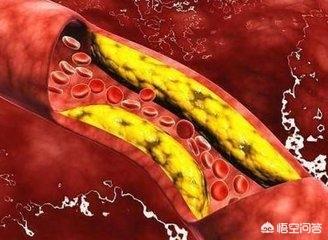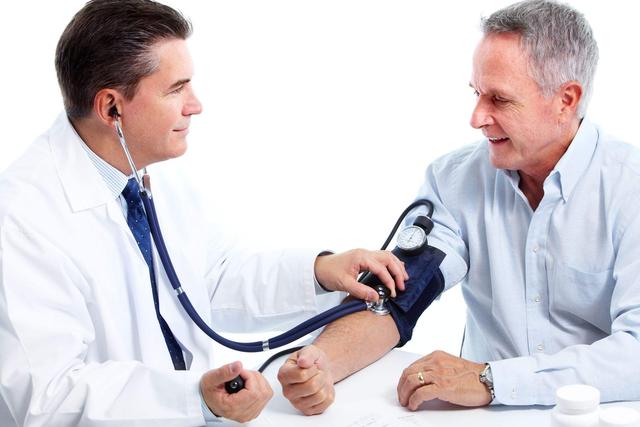Blocked blood vessels can be fatal, so how quickly can you get a blocked blood vessel open?
Blockage of large blood vessels in the human body is fatal!
Most common.
Cardiovascular blockage, acute myocardial infarction;
Blocked blood vessels in the brain, cerebral infarction;
Blockage of large pulmonary vessels, pulmonary embolism.
A blocked blood vessel must be opened as soon as possible, or else there will be tissue necrosis in the area of blood supply, even life-threatening.
However, there are different ways to quickly open the blood vessels in different parts of the body when they are blocked.
1. Acute myocardial infarction
Thrombolysis or stenting
Thrombolysis within 3 hours of onset is comparable to stenting, but thrombolysis leaves some problems, such as recanalization of blood flow even if the vessel is lysed, and fixed stenosis is not resolved.
That's why the guidelines recommend stenting is preferred if you can stent, unless you can't get to a hospital that can stent in 120 minutes.
And there is a time limit for integration, the longer it takes, the less effective it is. There is also an age limit, greater than 75 years of age tends to bleed.
2. Cerebral infarction
Thrombolysis, stenting or thrombolysis
These techniques are only carried out in some hospitals, and even if thrombolysis is not done in some hospitals, stenting and thrombolysis are even more technically demanding.
Most are treated conservatively.
3、Pulmonary embolism
It's a blockage of the great pulmonary vessels.
Thrombolysis or anticoagulation
Thrombolysis is necessary for high-risk patients, and anticoagulation is sufficient for patients at low to moderate risk.
Different parts of the blocked blood vessels, the rapid opening method is different, but they are all the same principle:fast fast fast!
The sooner the better!
At the end of the day, it has to come back to prevention as the only way to go.
Once a blood vessel is blocked we lose the initiative, half by doctors, half by life.
Therefore, prevention must be the mainstay, due to space limitations, on the prevention of blood vessel blockage, please pay attention to the cardiovascular Dr. Wang, in a number of articles mentioned in the prevention of blood vessel stenosis, including the video.
(Dr. Cardiovascular Wang officially authorized original protection, such as theft must be held legally responsible.)
It can indeed be fatal because human blood is the carrier of all energy, and when the blood vessels are completely blocked, the blood is unable to reach the organs, affecting their proper functioning and ultimately inducing a wide range of risks, many of which can lead to the onset of death.
Heart attack: The blood vessels supplying the heart are blocked for various reasons (vasospasm and contraction, plaque and thrombus blockage, atherosclerosis formation, etc.), and the heart muscle loses its vitality due to ischemia and hypoxia, and the heart may go on strike at any time and die.
Cerebral infarction: blood vessels in the brain are blocked due to .... blockage, resulting in ischemia and hypoxic necrosis of the corresponding regional tissues, followed by the loss of corresponding functions according to the necrotic area.
A quick vascularization?
For patients with an acute attack, rapid opening of the bloodstream is the first task, and there are three types of first aid!
1, Thrombolysis: drugs are injected to help dissolve blood clots. Simple equipment, lower cost, less trauma, and ease of operation are the advantages, which are very easy for patients to accept.
2, Stenting: A stent is implanted into the blockage to artificially hold the narrowed vessel open, which is less invasive than bypass surgery.
3, Bypass: Re-establishing artificial channels at both ends of the narrowed blood vessels to bypass the blockage, which is more invasive compared to stenting.
Vascularization is good?
This "normal" after treatment does not mean that it is cured.
The cause of the patient's blood vessel blockage has not been solved, and the blockage of other blood vessels has not been terminated, so we still can not relax, and the follow-up should also be actively controlled and treated.
Dual anticoagulation with aspirin and clopidogrel, adherence to statins, and standardized changes in lifestyle and dietary habits are the basic responses that need to be maintained over time. In addition to this, it is important to start immediately to investigate the main cause of the stenosis and blockage, to treat it scientifically and to restore the blood supply, and the combination of the two is the complete treatment process.
I hope my answer helps you!
If there's anything you don't understand, comment and private message me!
Reading the other responses, most of them are just nonsense.
First of all, when a blood vessel is blocked with symptoms, it is important to seek medical attention first, at a regular public hospital.
The general methods are: 1. drug injection, through the drug to talk about the thrombus dissolution. 2. through the intervention method, the thrombus will be removed. 3. through the blood vessel bypass bridge, which is equivalent to digging a tributary. 4. other.
In the case of some incomplete obstruction, which is detected on physical examination, antilipids, antiplatelet agents, anticoagulants, etc. can be used depending on the blockage.
For general vascular problems, if the location is in the heart or neck, go to cardiology or cardiovascular surgery; if the location is in the brain or neck, go to neurology and neurosurgery; if it is in other parts of the body, go to the relevant specialties.
Of course the best treatment is prevention. Strengthening exercise, a balanced diet and regular medical check-ups are the most important.
Vascular blockage refers to the occlusion of blood vessels due to age, dietary factors, and the formation of blood clots on the basis of pathological changes. It is common in cardiovascular and cerebrovascular blockage, etc., and is associated with diseases such as atherosclerosis, hyperlipidemia and hypertension.

Blocked blood vessels can be fatal, so how quickly can you get a blocked blood vessel open?
Blood vessel blockage most often occurs in the heart or brain, that is, cerebral infarction or heart attack, and organ ischemia and lack of oxygen, severe necrosis can occur, with a very high rate of death and disability. The treatment of blood vessel blockage must be early, if you wait until the blood vessel is completely blocked, it is often too late. The best time to treat heart attack and cerebral infarction is 3 hours after the onset of the disease.
For vascular blockage depending on the treatment, it is important to point out that many of the secret vascularization recipes circulating on the Internet are absolutely unreliable.The plaques that cause blood clots to occur are extremely stubborn, and it is impossible to simply break them up with food or medication. Gullible prescription will only delay the best time for treatment.Current treatment options for blood vessel blockage include thrombolytic therapy, stenting, and bypass.

1、Thrombolytic therapy - elimination of blockages
Blockage of blood vessels is mostly due to thrombosis, which is associated with blood clotting and lipid accumulation. Therefore, to eliminate blood clots, anticoagulation and thrombolytic therapy are mainly performed to help the clots to dissolve as soon as possible and to prevent the formation of new clots. Surgical removal of blood clots can also be used to remove emboli through microcatheter intervention.
It's like a clogged water pipe, either stop the clumps of crap in it from getting bigger and more solidified, or find a way to get the clumps to spread out and be harder to form a force, or just use a tool to get the crap out of it.
2. Stenting - holding the narrowed vessel open
This is often done in conjunction with the removal of an embolus. After the embolus is removed, a balloon or stent is placed in the blocked vessel to hold it open to ensure unobstructed blood flow.
3. Bypass - connecting another blood vessel
If this fails, bypass grafting can be used.Surgical procedures such as recanalization, reconstruction, or bypass grafting of narrowed or occluded arteries toReplaces the function of blocked blood vessels and creates new channels.
I'm not sure where the vessel you are referring to is? If it's a coronary artery, you need to evaluate the condition of your blood vessel, or even open the vessel in an emergency
Hello, I'm Dr. Mingjie Yang, and I'm here to answer this question for you.
How quickly can you get a blocked blood vessel open?
- Venous thrombosis refers to the formation of blood clots within the venous vessels. Blood clots abnormally in the venous lumen, transforming from a liquid form to a solid form, obstructing the venous lumen and causing obstruction to venous return, creating a series of symptoms of venous stasis called venous thrombosis.
- Early lesions of the affected limb without nutritional changes, later may be the main affected limb calf swelling and pain, calf at the itching, fish room Pi look, flaking, eczema and ulcers and other nutritional disorders such as changes in the lesions are limited to the affected limb boot area. The arterial pulsation of the limb is normal. The lower portion of the affected leg may be mildly edematous. In the late stage of the lesion, the affected limb may have ulcers in the boot area, generally without necrotic gangrenous changes.
- There are various treatments for venous thrombosis, which are different for different conditions. It is recommended that you first visit the vascular surgery department of a regular hospital to find out the diagnosis of the specific degree of thrombosis, and then treat it as soon as possible according to the specific condition.
There are many factors that affect the health of blood vessels, so to protect the health of blood vessels need to do from various aspects, and this is the most important is the following 3 points. If you want to blood to pipe healthier, then you need to do these 3 points, it is not too late to know, may wish to come together to learn.
1. Eat less high-salt food

Salt is an essential seasoning when cooking, if the frying less salt or no salt, then the food will be tasteless. But although salt is a necessary seasoning, but not the more salt the better, the amount of salt needs to be controlled, if you eat too much high salt food, then it will have an impact on the health of blood vessels, which will lead to vasodilatation, which in turn affects the health of the heart, the damage is great. In addition, if the long-term consumption of high-salt food, may also induce high blood pressure, which is undoubtedly a kind of damage to the blood vessels, especially for the older middle-aged and elderly.
2. Eat less high-sugar food

Sugar is the main source of carbohydrates and when carbohydrates enter the body they are converted into endogenous triglycerides, which can also harm the health of blood vessels. This is because carbohydrates converted to endogenous triglycerides increase the viscosity of the blood, which in turn leads to blockage of blood vessels. Therefore, if you want to protect the health of blood vessels, you need to control the intake of high-sugar foods, so as to minimize the consumption of high-sugar foods in life.
3. Control of blood pressure

Blood flows through the blood vessels to all the organs of the body. So the level of blood pressure also affects the health of these blood vessels. We all know that most cardiovascular diseases are closely related to blood pressure. Therefore, the control of blood pressure is a crucial point. So how to control the blood pressure? It is recommended to pay attention to the state of blood pressure, it is best to measure the blood pressure once in the morning, midday and evening, especially need to pay more attention to the state of blood pressure after waking up in the morning. In addition, emotions can also affect blood pressure, usually try to maintain a calm mind, must be less angry, less angry. Of course, diet is also very important, alcohol, spicy food, etc. should be eaten less or not eat.
You may not believe me when I tell you: I am the one who had two brain hemorrhages and got up from a wheelchair. My experience is to study the Yellow Emperor's Classic of Internal Medicine to understand where to massage and massage myself. In addition, I do Baduanjin to open up my meridians, and now I can run and work again.
Cleanse your blood vessels and drink water boiled with red dates with black fungus and ginger.
Clogged blood vessels are usually caused by blood clots, and if this occurs
If you go to the hospital immediately, the blood clot may travel down the bloodstream to your body.
Anywhere in the body, no other partials whatsoever
Use, is to quickly go to the hospital, go to the early hospital infusion of some thrombolytic
The medicine will be fine. Going late to dislodge a blood clot can be dangerous to your health.
harm, and the infusion of thrombolytic drugs does not always work anymore, missing the most
It's a good time for further treatment like stenting.
This question and answer are from the site users, does not represent the position of the site, such as infringement, please contact the administrator to delete.